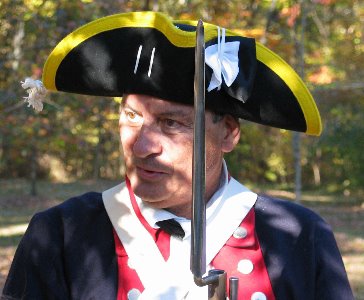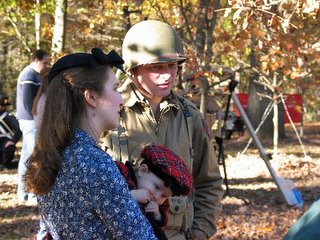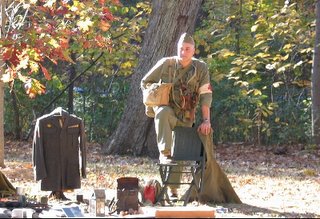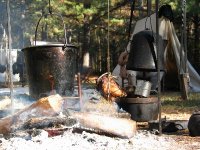 Today, the day after Memorial Day, the Guilford Courthouse National Military Park hosted the event "History of the American Soldier".
Today, the day after Memorial Day, the Guilford Courthouse National Military Park hosted the event "History of the American Soldier".The park is the site of a major battle of the Revolutionary War, and it is a fitting place for displays and story telling about the life of American soldiers.
From the National Park Service website:
The "History of the American Soldier" is a unique interpretive program conducted as a tribute to all veterans, past and present. This living timeline of history represents eight major periods of United States military history, from the French and Indian War of 1755 to the present day. Park visitors are invited to tour its displays of equipment and weaponry ranging from the flintlock musket to the M16. Park volunteers, properly uniformed to reflect the flashy redcoat of the 18th century, the blue (and gray) of the 19th, and the subdued camouflage of the modern eras will be available to answer questions and describe their displays.


At the same time, there was also the recreation of a 1781 military encampment:
The militia was the citizen-soldier of the Revolution. The Guilford Militia, a
re-created Revolutionary War militia company, will present demonstrations of
period camp life, cooking, military demonstrations and drill, and talks
throughout the day for park visitors to their weekend encampment.


 The chicken looked pretty yummy, better than the McDonald's that we ended up eating at.
The chicken looked pretty yummy, better than the McDonald's that we ended up eating at.







